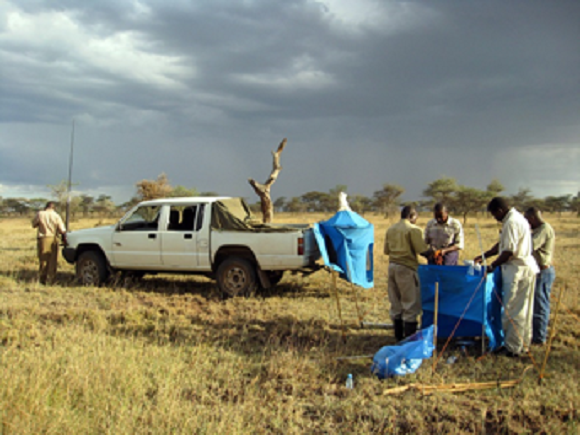
With funding from the DFID/RCUK-support programme in Zoonoses and Emerging Livestock Systems (ZELS) and WHO-TDR, we are analysing the transmission of trypanosomes at the edge of the wilderness areas of Tanzania and Zimbabwe. We are developing mathematical models of the transmission of trypanosomes in the transition zone from wildlife-dominated areas on the park boundaries through to livestock-dominated areas outside the parks. Parameter values for the models are being obtained using a combination of existing and new data on (i) the distribution, abundance, structure and infection status of tsetse populations, (ii) densities of wildlife and livestock hosts, (iii) number of livestock infected with trypanosomes, (iv) composition and population genetics of the trypanosome populations and (v) vegetational changes. The models will be used to predict the likely impact of various control interventions.
Partners
Our academic partners include Roslin Institute (Liam Morrison), South African Centre for Epidemiological Modelling and Analysis (John Hargrove, Glyn Vale), Scotland’s Rural College (Harriet Auty) and tsetse research groups from Tanzania (TTRI) and Zimbabwe (TCD).
Relevant current grants
PI, BBSRC/ZELS, 2014-2017; Life on the edge: tackling human African trypanosomiasis on the edge of wilderness areas; £706,854.
Co-PI, WHO-TDR, 2013-2016; Human African Trypanosomiasis: alleviating the effects of climate change through understanding human-vector-parasite interactions; LSTM grant $71,722.
Recent relevant papers
1. Torr SJ, Chamisa A, Mangwiro TNC, Vale GA (2012) Where, when and why do tsetse contact humans? Answers from studies in a national park of Zimbabwe. PLoS Negl Trop Dis 8 e1791.
2. Hargrove JW, Ouifki R., Kajunguri D, Vale GA, Torr SJ (2012) Modeling the Control of Trypanosomiasis Using Trypanocides or Insecticide-Treated Livestock. PLoS Neglected Tropical Diseases 6:e1615.
3. Vale GA, Hargrove JW, Chamisa A, Hall DR, Mangwiro C, Torr SJ (2013) Factors Affecting the Propensity of Tsetse Flies to Enter Houses and Attack Humans Inside: Increased Risk of Sleeping Sickness in Warmer Climates. PLoS Negl Trop Dis 7 e2193
4. Vale GA, Hargrove JW, Solano P, Courtin F, Rayaisse J-B, Lehane MJ, Tirados I, Esterhuizen J, Torr SJ. (2014) Explaining the Host-Finding Behavior of Blood-Sucking Insects: Computerized Simulation of the Effects of Habitat Geometry on Tsetse Fly Movement. Plos Neglected Tropical Diseases 8:e2901
5. Torr SJ, Vale GA (2015) Know your foe: lessons from the analysis of tsetse fly behaviour. Trends in Parasitology 31: 95-99.